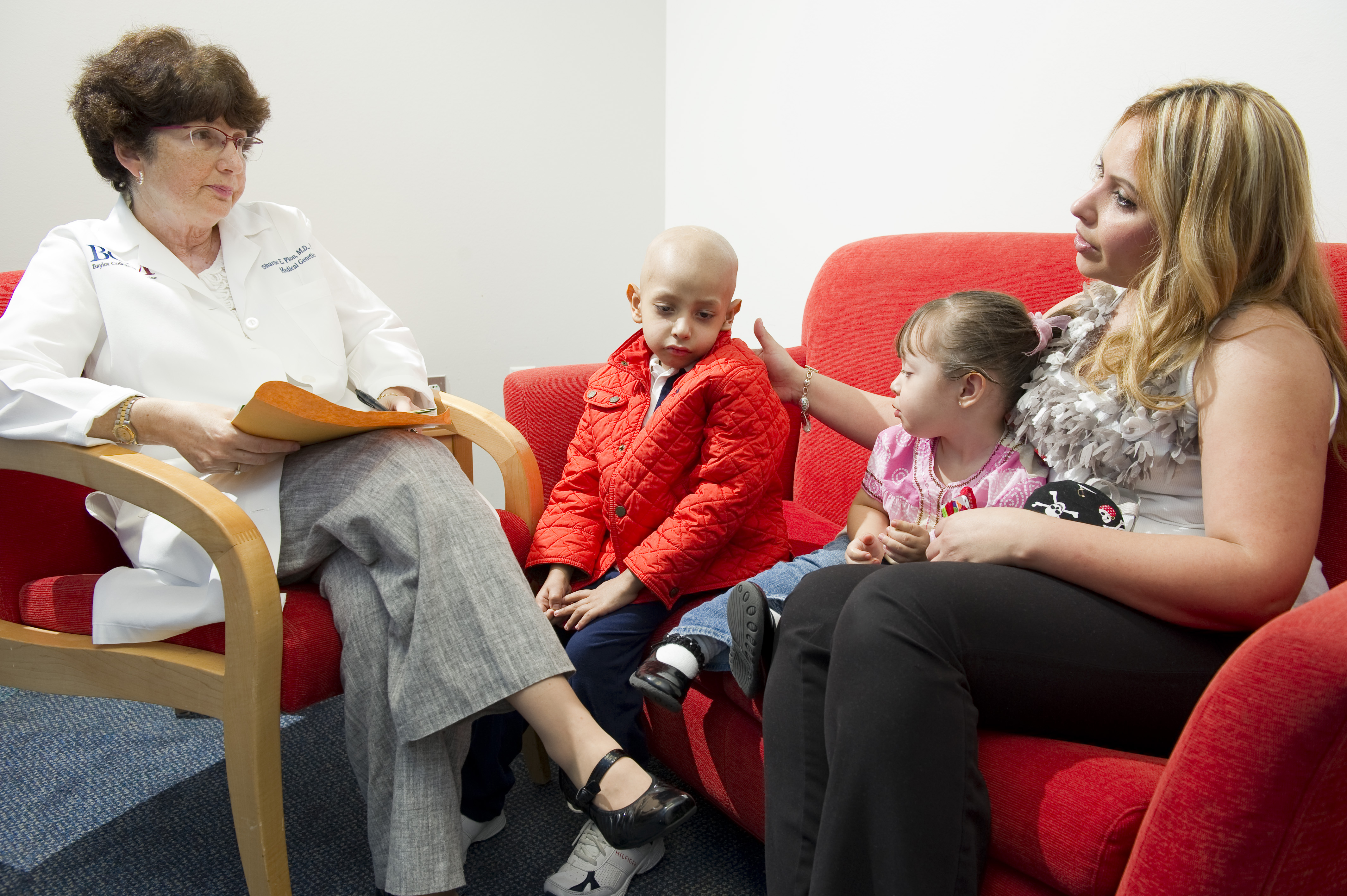somatic mutations
Study Shows DNA Sequencing Brings Greater Precision to Childhood Cancer
Posted on by Dr. Francis Collins

Caption: Baylor’s Sharon Plon consults with a family at the Texas Children’s Cancer Center in Houston.
Credit: Paul V. Kuntz/Texas Children’s Hospital
An impressive number of fundamental advances in our understanding of cancer have occurred over the past several decades. One of the most profound is the realization that cancer is a disease of the genome, driven by a wide array of changes in DNA—some in the germline and affecting all cells of the body, but most occurring in individual cells during life (so-called “somatic mutations”). As the technology for sequencing cancer genomes has advanced, we are learning that virtually all cancers carry a unique set of mutations. Most are DNA copying errors of no significance (we call those “passengers”), but a few of them occur in genes that regulate cell growth and contribute causatively to the cancer (we call those “drivers”). We are now learning that it may be far more important for treating cancer to figure out what driver mutations are present in a patient’s tumor than to identify in which organ it arose. And, as a new study shows, this approach even appears to have potential to help cancer’s littlest victims.
Using genomic technology to analyze both tumor and blood samples from a large number of children who’d been newly diagnosed with cancer, an NIH-funded research team uncovered genetic clues with the potential to refine diagnosis, identify inherited cancer susceptibility, or guide treatment for nearly 40 percent of the children [1]. The potential driver mutations spanned a broad spectrum of genes previously implicated not only in pediatric cancers, but also in adult cancers. While much more work remains to determine how genomic analyses can be used to devise precise, new strategies for treating kids with cancer, the study provides an excellent example of the kind of research that NIH hopes to accelerate under the nation’s new cancer “moonshot,” a research initiative recently announced by the President and being led by the Vice President.
Secrets of a Supercentenarian’s Genome
Posted on by Dr. Francis Collins

Caption: Hendrikje van Andel-Schipper (2nd from the left) in her youth. She was born June 29, 1890, premature and so tiny that no one thought she would survive. However, she lived to be 115.
Credit: Ramon Schipper
Not too long before 115-year-old Hendrikje “Hennie” van Andel-Schipper died in 2005, this Dutch “supercentenarian” attributed her remarkable longevity to eating raw salted herring, to drinking orange juice, and—with a twinkle in her eye—“to breathing.”
Because very few humans have survived as long Hennie, it’s only logical to ask whether some of the secrets to her impressive lifespan might lie in her genes. And we find ourselves in a great position to explore such questions, thanks to the convergence of two things: recent advances in DNA sequencing technology, and Hennie’s generous decision, made when she was a mere 82 years old, to donate her body to science upon her death.
 We humans are wired to search for a causative agent when something bad happens. When someone develops cancer, we seek a reason. Maybe cancer runs in the family. Or perhaps the person smoked, never wore sunscreen, or drank too much alcohol. At some level, those are reasonable assumptions, as genes, lifestyle, and environment do play important roles in cancer. But a new study claims that the reason why many people get cancer is simply just bad luck.
We humans are wired to search for a causative agent when something bad happens. When someone develops cancer, we seek a reason. Maybe cancer runs in the family. Or perhaps the person smoked, never wore sunscreen, or drank too much alcohol. At some level, those are reasonable assumptions, as genes, lifestyle, and environment do play important roles in cancer. But a new study claims that the reason why many people get cancer is simply just bad luck.